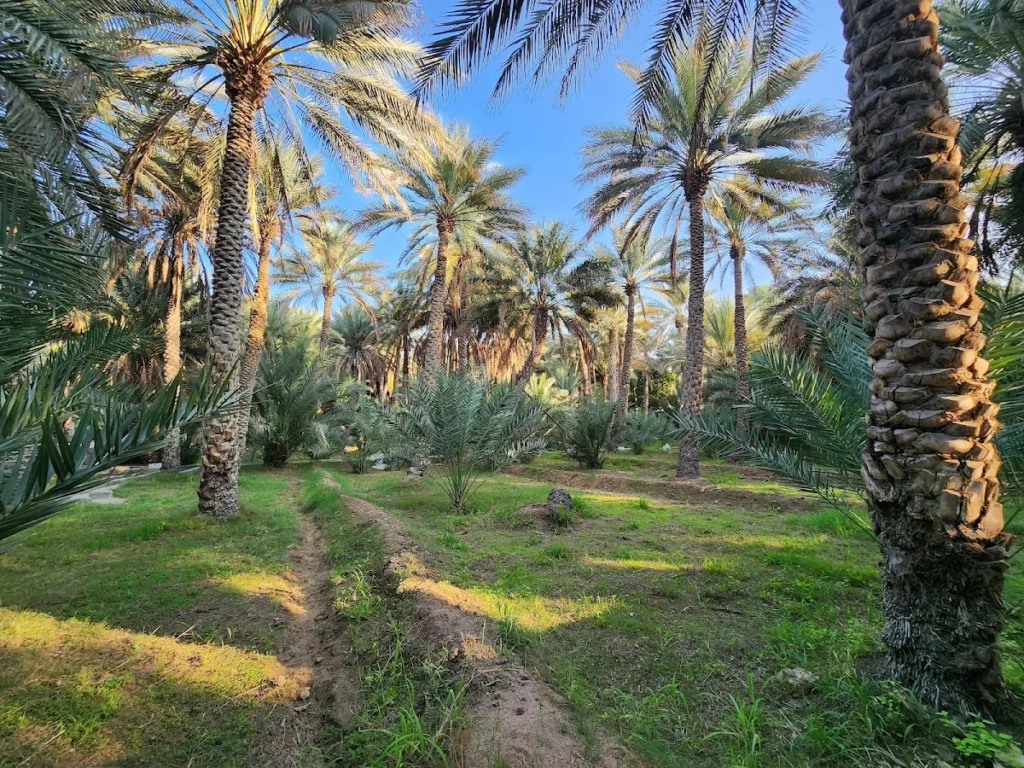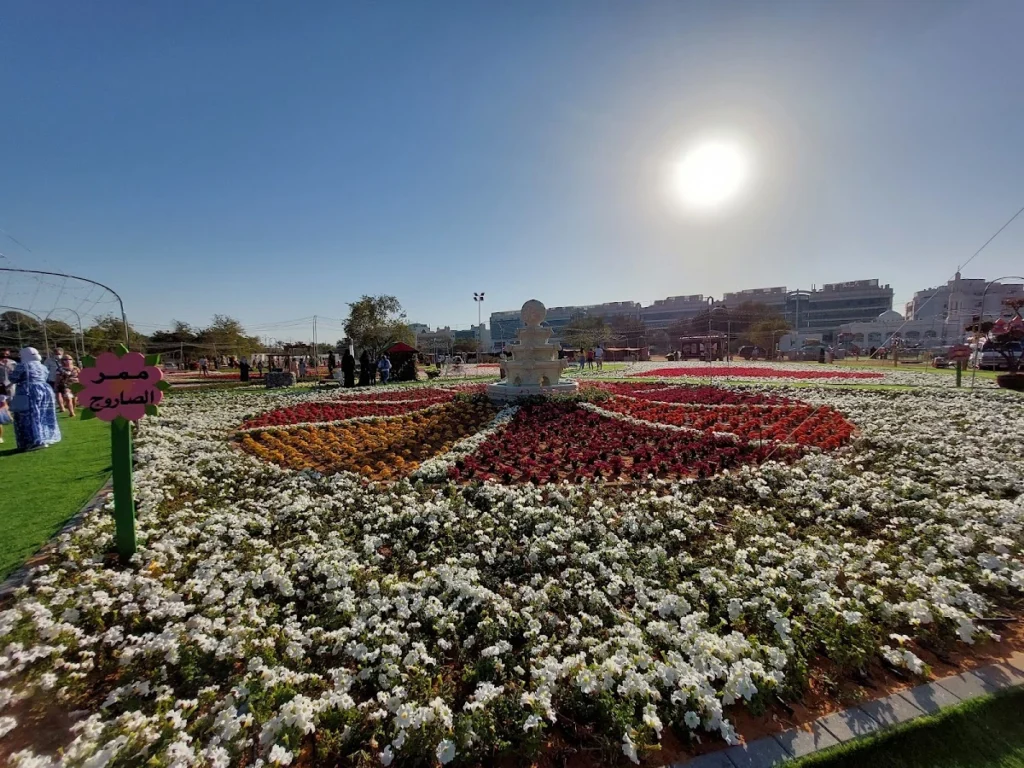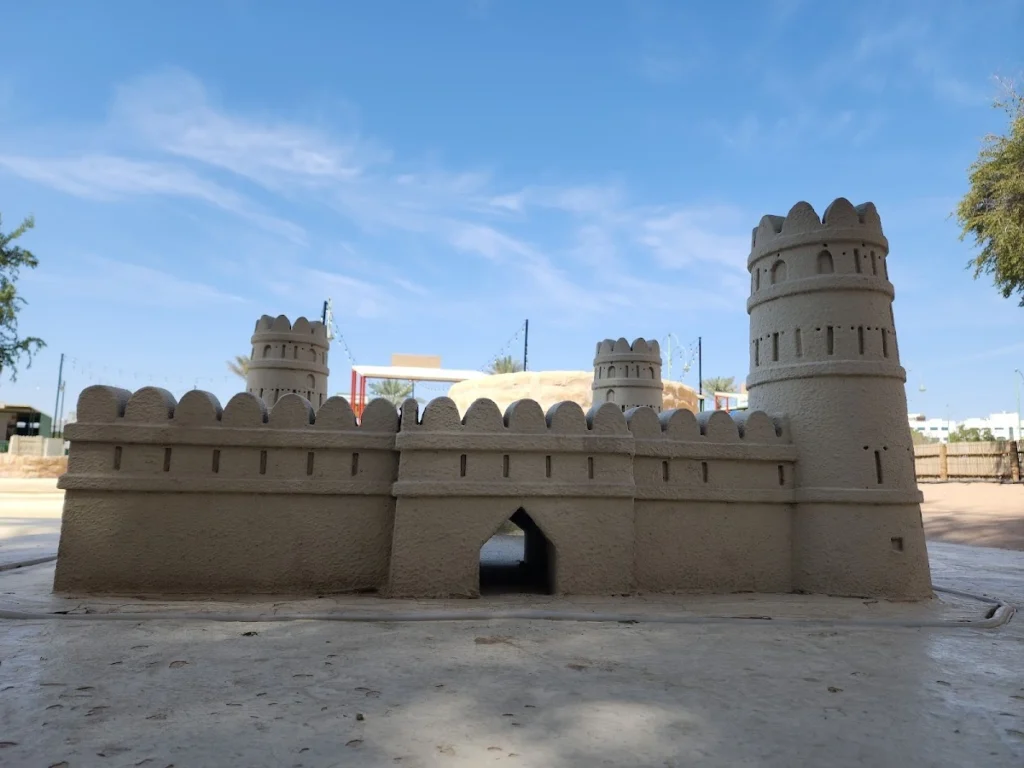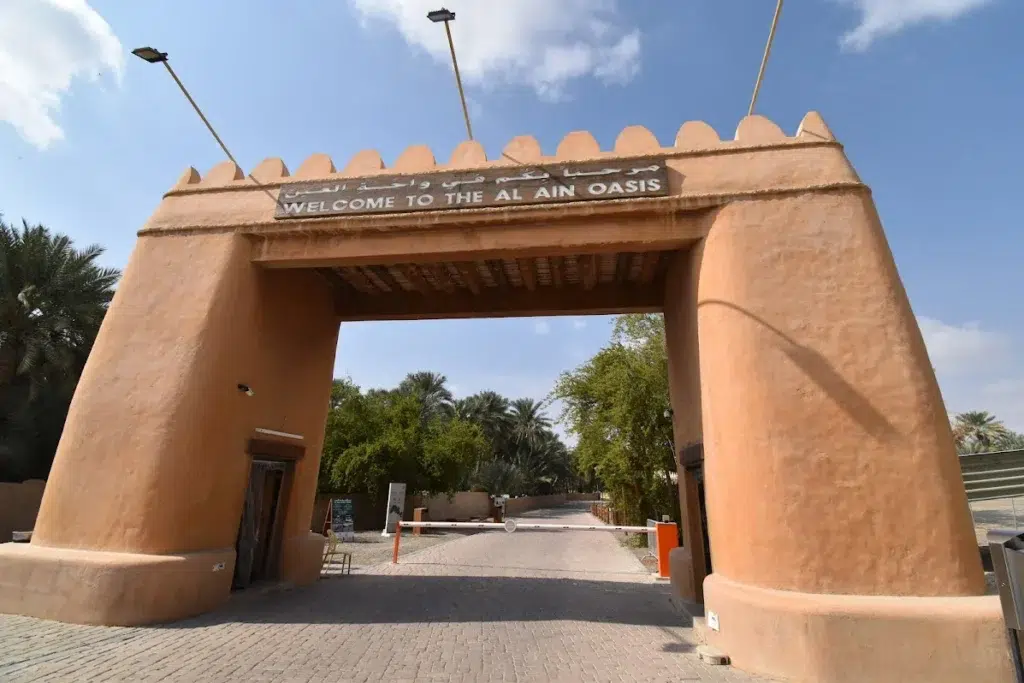Al Ain Oasis Park is more than just a green escape — it’s a living piece of history and one of the most culturally significant sites in the UAE. Recognized by UNESCO for its ancient falaj irrigation system, this lush paradise spans over 3,000 acres and is home to more than 147,000 date palms, as well as a variety of native plants.
Whether you’re escaping the heat, seeking a family-friendly outing, or looking to explore an ancient agricultural wonder, Al Ain Oasis Park offers a unique blend of natural beauty, heritage, and tranquility.
Let’s dive into everything you need to know before visiting this serene desert gem.
What Makes Al Ain Oasis the UAE’s First UNESCO World Heritage Site?
In 2011, Al Ain Oasis was inscribed as the UAE’s first UNESCO World Heritage Site due to its ancient falaj irrigation system, which has been sustaining life in the desert for over 3,000 years.
This remarkable water distribution network is still functional today, showcasing the ingenuity of early Arabian civilizations in transforming arid landscapes into fertile oases.

You’ll see these channels running through the park, feeding the towering palm trees and other vegetation — a stunning example of sustainable engineering that continues to thrive.
💡 Did You Know? The falaj system is not only a marvel of ancient technology but also a symbol of community cooperation and environmental harmony.
Where Is Al Ain Oasis Park Located?
Al Ain Oasis Park is located in the Al Mutawa’a district of Al Ain, a city renowned for its rich cultural heritage and deep-rooted connection to nature. It is situated near major landmarks, such as the Al Ain Palace Museum, making it easy to combine visits.
How to Reach Al Ain Oasis Park from Abu Dhabi and Dubai
- From Abu Dhabi (approximately 159 km): Take E22 (Al Ain Road). The drive takes around 1 hour and 40 minutes, offering scenic desert views along the way.
- From Dubai: Drive via Sheikh Khalifa Highway or take the RTA bus from Al Ghubaiba Bus Station to Al Ain. Either way, you’ll arrive relaxed and ready to explore.
🏞️ Pro Tip: Combine your visit with a trip to the nearby Al Ain National Museum or Jebel Hafeet Mountain for a full day of discovery.
Al Ain Oasis Park Timings
The park welcomes visitors year-round, with opening hours designed to help you enjoy the best of the oasis at the most comfortable times of day:
- Opening Hours: 8:00 AM – 8:00 PM (Daily)
- Best Time to Visit: Early morning or late afternoon for cooler temperatures and beautiful golden-hour photography.

Is There an Entry Fee?
Good news! Entry to Al Ain Oasis Park is FREE. Whether you’re a tourist or a local, you can stroll under the shade of thousands of date palms without spending a dirham.
This makes it a fantastic option for budget-friendly travel experiences, ideal for families or solo travelers seeking a quiet retreat.
Attractions at Al Ain Oasis Park

There’s plenty to see and do at Al Ain Oasis Park. Here are some highlights:
Date Palm Groves
Wander through rows of majestic date palms — over 147,000 of them! This vast grove is not only visually stunning but also vital to the region’s agriculture and culture.
Eco-Center
Discover the flora, fauna, and sustainability initiatives that sustain the oasis. The center is educational and interactive, perfect for kids and curious travelers.
Ancient Falaj Irrigation System
See the falaj system in action — a marvel of ancient engineering that still waters the entire oasis.
Resting Areas
Scattered throughout the park, shaded seating areas offer peaceful spots to relax and soak in the serenity.
How to Explore Al Ain Oasis Park
On Foot
Walking is one of the best ways to experience the park. The wide, shaded pathways are perfect for strolls, especially during sunrise or sunset.
By Bike
Want to cover more ground? Rent a bike and cycle through designated trails. Biking is both fun and eco-friendly, and a great way to explore the park’s many corners.
🚲 Tip: Bring your bike or inquire about rentals at the entrance for a smoother experience.
🛠️ The Ancient Falaj Irrigation System Explained
The falaj system is the lifeline of Al Ain Oasis. Here’s how it works:
How Does the Falaj System Work?
Water flows from underground wells and mountain springs through a series of open channels. Using gravity, the water moves across the land to nourish crops and palm trees.
Farmers manually control the flow, ensuring each area gets the right amount of water. This simple yet effective method has sustained the oasis for thousands of years.
Why Is the Falaj System So Significant?

It’s not just about water — it represents centuries of human adaptation to harsh desert conditions. The falaj reflects the values of community cooperation, resource management, and environmental balance.
This system is so important that it helped Al Ain Oasis become a UNESCO World Heritage Site, preserving it for future generations.
Historical Sites Within the Oasis
Al Ain Oasis isn’t just about nature — it’s steeped in history too.
Eastern Fort
Located within the oasis, the Eastern Fort dates back to the 18th century and served as both a watchtower and an administrative center. Today, it stands as a reminder of Al Ain’s strategic importance in the region’s past.
What Fruit Trees and Plants Can You Find?
Beyond the iconic date palms, the oasis features a surprising variety of plant life:
- Citrus trees
- Pomegranate bushes
- Banana plants
- Vegetable gardens

These crops demonstrate the diversity and productivity of the oasis environment, even amid the desert.
Most Popular Photo Spots in Al Ain Oasis Park

If you love photography, this place is a dream come true!
Sunrise/Sunset Views
The soft light filtering through the palm trees creates magical photo opportunities.
Falaj Channels
Capture the flowing waterways that weave between the trees — a perfect blend of nature and heritage.
Elevated Viewing Points
Find a vantage point above the groves for sweeping shots of the entire oasis.
Additional Tips for Visiting Al Ain Oasis Park
Dress Code
Wear light, breathable clothing and don’t forget:
- Sunscreen
- Hat
- Sunglasses
- Comfortable walking shoes
Stay Hydrated
Although the oasis is shady, the surrounding desert climate can still be extremely hot. Carry water with you.
Photography Etiquette
Respect the space and avoid disturbing wildlife or stepping off paths.
Wildlife Watch
Keep an eye out for birds, small reptiles, and insects that call the oasis home.
10. FAQs About Al Ain Oasis Park
What is the Al Ain Oasis Location?
Al Ain Oasis is located in the heart of Al Ain city, near Hessa bint Mohammad Street. This central spot makes it easy for both locals and tourists to visit and enjoy the lush greenery.
Is Al Ain Oasis Park Free to Enter?
Yes, Al Ain Oasis Park is free to enter! There is no entry fee, so you can spend a wonderful day enjoying nature without any cost.
What Time Does Al Ain Oasis Park Open?
Al Ain Oasis Park is open daily from 8:00 AM to 5:00 PM. It’s best to visit during these hours to enjoy everything the oasis has to offer.
How Can I Rent a Bike at Al Ain Oasis?
You can rent a bike at the West Gate of Al Ain Oasis. There are various types of bikes available, and you can inquire about rental prices at the entrance. It’s a fun way to explore the park!
Can You Visit the Al Ain Oasis at Night?
Al Ain Oasis is not open at night. The park closes at 5:00 PM, so it’s best to visit during the day when you can fully enjoy the scenery and activities.
Are There Guided Tours Available in Al Ain Oasis?
Yes, guided tours are available at Al Ain Oasis! These tours can help you learn more about the oasis’s history and plants, making your visit even more interesting.
Can You Bring Pets to Al Ain Oasis?
Pets are not allowed in Al Ain Oasis Park. This policy helps maintain a clean and safe environment for all visitors to the park.
What Should You Wear When Visiting Al Ain Oasis?
It’s best to wear comfortable clothing and sturdy shoes when visiting Al Ain Oasis. ???? Since you may walk or bike around, comfort is key! Additionally, consider wearing a hat and sunglasses to protect yourself from the sun’s harmful rays.
Is There Parking Available Near Al Ain Oasis?
Yes, there is parking available near Al Ain Oasis Park. This makes it easy to access the park by car. Please follow the signs upon arrival.
How Long Does It Take to Explore Al Ain Oasis?
Most visitors spend about 1.5 to 2 hours exploring Al Ain Oasis. This gives you enough time to walk, take photos, and enjoy the different attractions. If you rent a bike, you might spend even longer!
Q: Is Al Ain Oasis part of any desert safari tour?
A: While not part of traditional dune safaris, it’s often included in cultural desert tours or eco-tours like the Overnight Desert Safari Dubai or Al Marmoom Desert Conservation Reserve.
Final Thoughts: A Hidden Gem Worth Exploring
Al Ain Oasis Park is more than a green patch in the desert — it’s a window into the UAE’s ancient past, a hub of biodiversity, and a peaceful retreat from modern life.
Whether you’re a history buff, nature lover, or just looking for a relaxing day out, this UNESCO-listed park should be on your list.
So why not plan a visit soon?
Plan Your Adventure Today!
Ready to explore the lush beauty of Al Ain Oasis Park? Add it to your itinerary when planning your next trip to Al Ain or as part of a broader desert safari in Dubai.
Looking for more hidden gems? Check out our guides on:
Let Desert Leap Safari guide you through the wonders beyond the city skyline.

